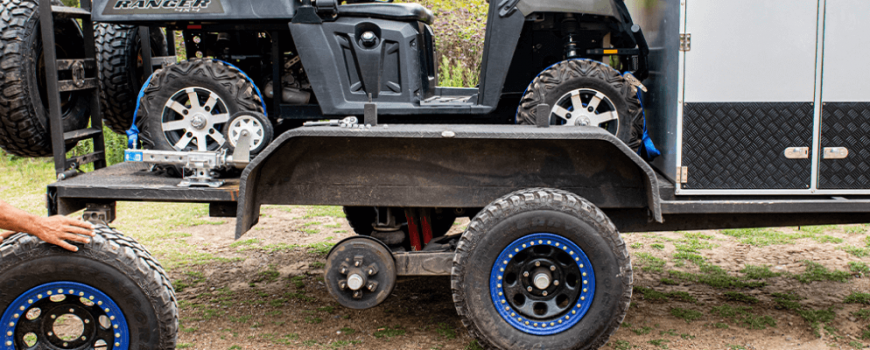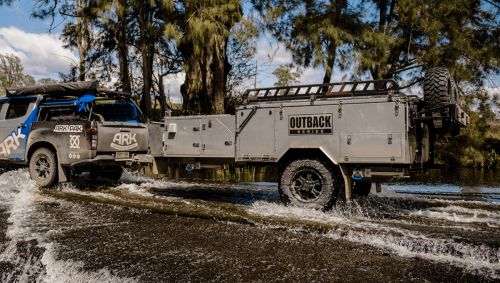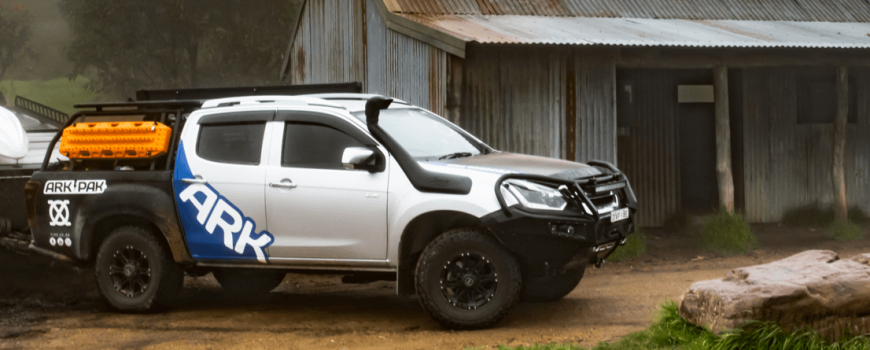For some, camp-side cooking involves boiling a pot of water, pouring it over a plastic cup of instant noodles, then reusing said cup the following morning as something to hold your morning brew. Don’t get us wrong. If this does it for you, then carry on as usual.
However, if freeze-dried food, tins with suspiciously long expiry dates, and processed meats aren’t for you, upping your portable camp kitchen game can elevate your meals from ‘meh’ to ‘mind-blowingly amazing.’
Just because you’re wilding it away from civilisation doesn’t mean you have to suffer in silence. With a few handy camp kitchen set-up ideas, a couple of useful accessories and a good idea of what you want to eat, you’ll be able to pull off your best Curtis Stone or Emma Dean no matter where you pitch up.
To help kick start your efforts and give you a little bit of inspo, here’s our guide to setting up the ultimate portable camp kitchen.

Know Before You Go
Setting up the ultimate portable camp kitchen is all in the planning. Knowing where you are going, what is available nearby and what you want to cook will help shape the type of equipment and accessories you need to carry. It will also help eliminate many non-essentials, lightening the load and boosting fuel economy.
Some things to make a note of include:
- Your destination (and its proximity to the nearest town).
- How long do you plan on camping?
- The time of year (to work out if cool storage is needed).
- How many people are travelling on the trip?
- Whether you want fast meals or gourmet creations.
- How will you store your ingredients?
- How do you plan on cooking (electric or gas?)
- How will you clean up and deal with waste?
Portable Camp Kitchen Essentials
To elevate your culinary experience while making meals worthy of a standing ovation, you’re going to need a few basic essentials.
Kitchen Utensils
It’s surprising just how much you can do with a handful of kitchen utensils. While it’s tempting to empty your kitchen drawers in their entirety into your camping boxes, these are all you actually need to prepare anything to cook.
| Chopping board | Can opener | Bottle opener |
| Sharp knives | Stirring spoon | Corkscrew |
| Spatula | Tongs | Measuring cups |
| Whisk | Grater | Measuring jug |
| Veg peeler | Serving spoon | Knife sharpener |
Cookware
Again, cookware is something you’ll choose to fit your cooking equipment and the types of meals you intend on preparing. To give you an idea of what to pack and take with you, here are a few essentials.
| Frying Pan | Skillet | Bamboo steamer |
| Pots with lids | Dutch oven | Meat grill |
| Glass dishes | Microwave boxes | Wok |
Tableware
While paper plates, plastic cutlery and single-use straws may be a quicker way to plate up, eat and clean up, they are not great for the environment. Reusable dishes and utensils may cost slightly more, but you get a return on investment after a few uses, and they are less likely to end up polluting ecosystems. In fact, the easiest thing to do is simply take the tableware you use at home with you. Some things to remember to pack include:
- Plates, bowls and drinking glasses.
- Mugs and cups.
- Knives, forks and spoons.
- Placemats or lap mats.
- Seasoning shakers.
- Napkins.
- Seasoning and sauce bottles.

Clean-up
With cooking comes dishes and pans, so you’ll want to set up a wash station near your camp kitchen. If your trailer or RV doesn’t have a fold-out wash station, a folding table with a collapsible wash basin and a drying rack is all you need. You’ll also want a closable waste bin to put any scraps in – especially if you don’t want local wildlife trying to break in at night.
The easiest way to deal with dishes and pans when camping is:
- Fill a basin or container with hot water and biodegradable dish soap.
- Fill another container with plain hot water.
- Drop dishes into the hot water to soak. Fill pans with hot soapy water.
- Scrub dishes, cutlery, and pans to remove any food.
- Dip washed plates and utensils in clean hot water to rinse.
- Leave to air dry or wipe down with a cloth.
- before disposing, empty water through a cheesecloth to catch any debris.
Food Storage
Unless you like the thought of sharing your trailer or RV kitchen with wasps, fire ants, and dingoes, you’ll want to consider how and where you’ll store your food. If you’ve got a 12v power system, then a portable fridge is ideal for storing meat, dairy and cooked food. Cool boxes are also a great option if you have somewhere selling ice or ice packs nearby.
Here are some of the most common food storage options when camping:
- Tupperware boxes
- Zip-lock food bags
- Portable fridge/freezer
- Portable cool box/ice box
- Takeout containers
- Mason jars
- Kitchen foil
You’ll also want to think about which ingredients to take with you. For the most part, you should be able to stock up on fresh meat, dairy and eggs on your way. If you can’t, then you’ll want to pack and cold-store them before you leave. A few essentials to remember include:
| Seasoning sachets | Salt & pepper | Garlic/tomato paste |
| Pre-mixed pastes | Stock cubes | Sugar |
| Sauce bottles | Mustard | Soy sauce |
| UHT Milk | Root veg | Pasta & Rice |
Top Camp Kitchen Accessories
When it comes to portable camp kitchens, the ways you cook will vary depending on your setup. In the past, a simple BBQ and fire were enough to grill hotdogs over an open flame, but nowadays, a combination of electric, gas and charcoal is preferable. If you want to take your microwave, fridge and convection stove top with you but are worried about not having access to mains power, the ArkPak 73- & ArkPak 730 Pure Sine provide portable power – no matter where you are.
Obviously, charging and maintaining your power supply battery is important, which is where the DC-DC Battery Charger and Solar Panels come into play. We’re lucky enough to live in a country that enjoys generous amounts of sunshine, so why not take advantage of it to power your portable camp kitchen? If you’re after something a little beefier for your camper trailer or RV, the XO Tech Power Distribution Hub is a fantastic choice.
Once you’ve got your power sorted, here are some ideas of what to carry with you.
- Microwave or toaster oven
- Convection stove top
- Toaster and kettle
- Butane camping stove
- Charcoal BBQ

Looking For More?
With over 40 years in the RV, trailer and camping industry, you can count on ARK to deliver quality parts and accessories designed to elevate your trip. Take advantage of decades of hands-on experience and knowledge at this independent, Australian-owned specialist.
Whether you’re looking to power up your camper-trailer, RV or caravan or looking for ways to boost your comfort and safety but not sure where to start? Get in touch today to talk with our experts, who are always more than happy to help.





